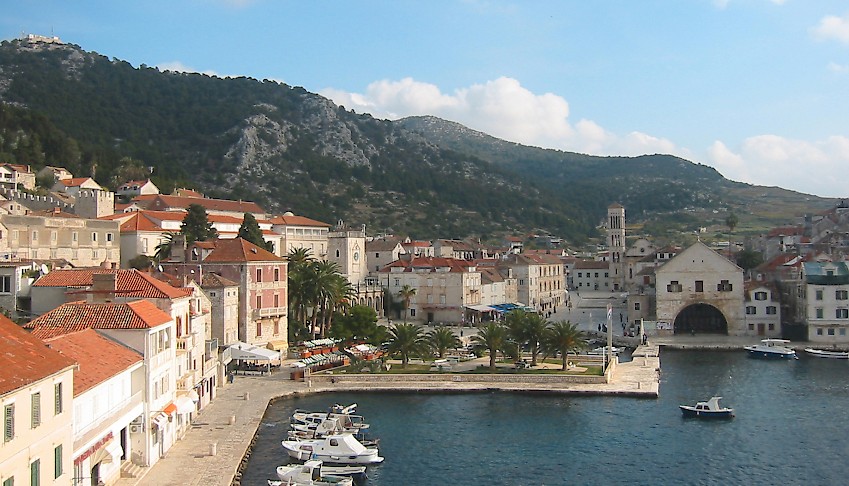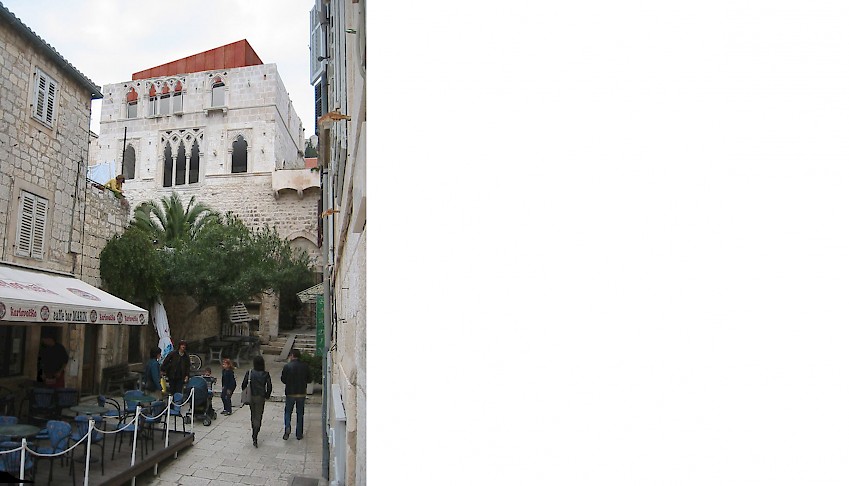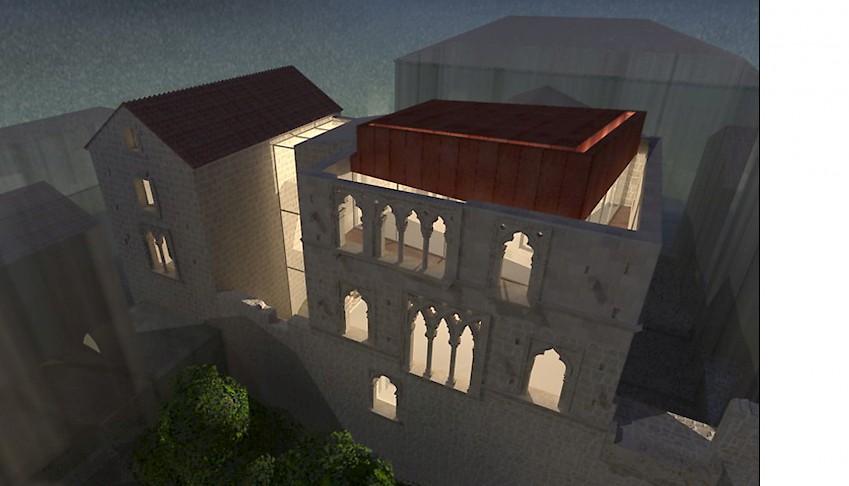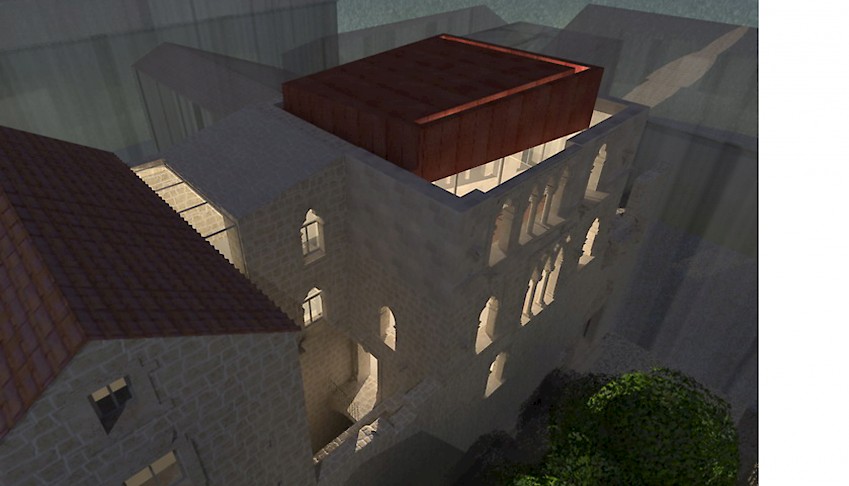The complex comprised of Hektorović Palace and Jakšić House is an important part of the medieval matrix of the city of Hvar.
Its surroundings (Benedictine monastery in the north, the church of Saints Cosmas and Damian in the west and the immediate proximity of the city walls in the south) is reaffirming this importance. The canvas of the south façade of the Palace is a picture set in stone. This understanding motivates us to start a dialogue with time and space. With the new intervention, Hektorović Palace and Jakšić House have not changed their primary function. The new complex is also residential. In the context of the given task, we agreed that a functional approach to the palace could not be used as an alibi to create something completely new. Nor could it be a decisive element when establishing a dialogue, because we know that the architecture does not reside solely on the functional base. We have learned this from the history of architecture, which is an important interpreter in reading multilayered architectural objects such as this one. A dialogue with time implies that we have to keep in mind the daily needs of the inhabitants and to infuse the present (the beginning of the 21st century) into the body of a defined architectural work by respecting and generating elements of construction, skin, and form a space that is ‘’positively empty’’.
All elements of design, both traditional and artificial, accentuate the already existing elements. A sort of censure is established in between the materials; as an example, a finishing floor paneling is not touching the wall.
The staircase is detached from the wall, the wall is treated as an independent whole and the staircase itself is an autonomous unit not connected to the main body of the building. The spaces in between Jakšić House and Hektorović Palace are conceived as a vertical communication (elevator, staircases).
The glass elevator is attached to an independent surface, its transparency emphasizes the volume of the staircases. The staircase landings are treated as visual platforms, which either penetrate into the walls or are parallel to it. The staircase of the palace has never just been mean to overcome the height difference in between the levels, it has carried the character of spatiality.
Its tectonics reflected the importance of the house, set either within the body or on the outside. Because of it, this design concept treats the staircase as a light element connecting the new palace; it is embodied in the materials, positions, and form. The new solution also activates two terraces in between Jakšić House and Hektorović Palace. The construction of the terraces is made out of steel, light, in montage and transparent. The basement level is entirely new and is comprised of the functional part and the recreational space, some contents that were meant to be lodged in the ground floor have been relocated to the basement, and the ground level was given a new meaning, that of an entrance space.
By implementing the methodology of caesura and distance, the openings on the higher levels of the palace (one-light, three-light) were treated as a separate phenomenon and an enclosed whole, and they are not connected to the new elements. Light glass walls have been removed from the trefoils, they are independent, and segmented windows are seen as inserted paintings from the inside, while in the exterior, we read those openings in their full plasticity.
Because of the fact that Hektorović palace had never been finished (there was no roof), our approach to the roof and bringing the building to its final stage in the 21st century was to keep it unfinished and to preserve the memory of its prior physical existence. Consequently, the new roof was retracted from the canvas of the façade and it stands as an assertion of time in its formation.






